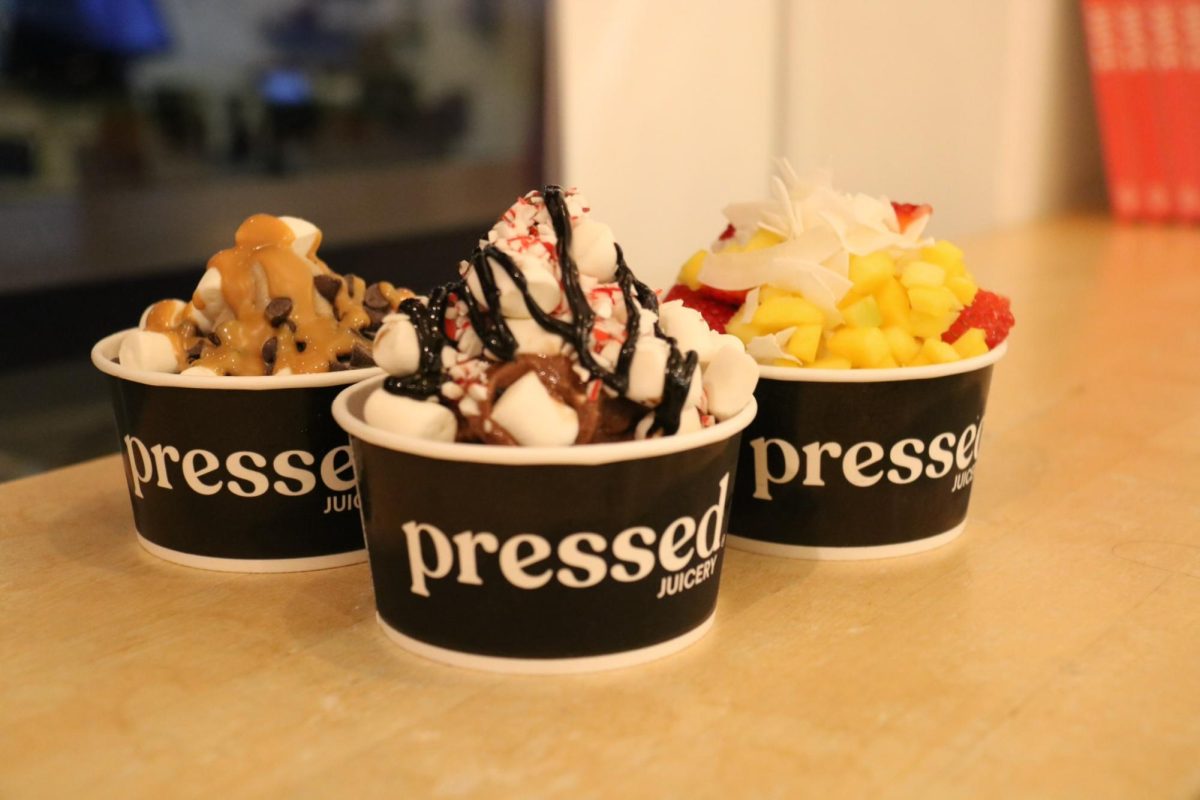As a cross country runner, avid outdoor enthusiast and salesperson of three years at local shoe store, Archrival Sports, I can confidently say I know athletic shoes. Across gait, width, support, drop, I can find anyone the perfect pair that matches their comfort and style. Thus, as one of Redwood’s resident shoe connoisseurs, I’ve put together a shoe guide for picking out the best pair depending on your foot shape, from higher arches to narrow heels, and athletic needs, whether you’re a hiker or road-runner.
First, familiarize yourself with some of this essential shoe and foot jargon. Oftentimes, these are the factors I look for when determining someone’s best shoe fit.
Arch: This is the curve of your foot. You can test your arch by dipping your foot in water, stepping on cardboard and studying the amount of the filled-in footprint. Most people have normal arches (about a half-filled footprint), but flat/low (complete footprint) and high arches (large space between toes and heel) are also common. When a shoe has “support,” the support is often referring to how much material is under the arch. 
Mechanics: The way you run or walk, typically referring to the side-to-side rolling movement of your foot when hitting the ground. Naturally, the foot pronates, landing on the outer side and then rolling inwards, but some people can overpronate, putting heavy pressure on the inside of their foot. Other folks can supinate, landing on the inside of the foot and rolling outwards.
Heel to Toe Drop: Usually referred to as “drop” or “offset,” this measurement tells you the difference between a shoe’s heel and toe height and is measured in millimeters. Drop determines how your heel strikes the ground — higher drop shoes, which are found in more traditional trainers, encourage landing on the heel first, while zero or low drop shoes promote landing on the middle of your foot as you stride.
Tread: Look at the bottom of your shoe. The grooves, cleats and lugs on the sole are known as the tread. Trail shoes will typically have a more intense tread on the bottom to grip uneven terrain, while road shoes are smoother.
Now that you’re versed in some shoe linguistics, here are some of my recommendations! One important note to keep in mind is that everyone’s feet are different. The only way to know if any of these shoes actually work is by trying them on.
Best All-Around Shoe — Brooks Adrenaline
Brooks is a sports equipment company that’s been an American shoe staple since 1914 and the Adrenaline is one of their best sellers! It’s incredibly popular at Archrival as well — and for good reason.

The Adrenaline is a balanced shoe by almost all standards, with high-density foam that contributes to a durable and soft cushion, but does not collapse, thus offering a responsive ride that feels as if it’s contributing to the wearer’s energy. Brooks also employs their GuideRails technology to the Adrenaline, a valuable stability system that cradles the foot between two pieces of foam cushion in the midsole.
Though more geared toward those with pronation, the medium support offered by the GuideRails can be beneficial to many. The shoe also has a Crash Pad, a shock absorber that minimizes tension and enhances smooth landings. Ultimately, the shoe offers a middle of the run compromise that can be ideal for anyone: nurses, cross-country runners and even teachers.
Similar shoe alternatives: Asics GT-2000 (one of my personal favorites, less support, bouncy gel cushioning); New Balance 860 (firmer, more stability-oriented with denser cushion); Saucony Guide (light stability, durable, slight rocker bottom); Hoka Arahi (small drop, rocker bottom, stiffer).
Best Neutral Shoe – Nike Pegasus

I’ve never been Nike’s biggest supporter, simply because I feel they outshine a lot of other notable brands due to their household recognition. But, I would be doing the running shoe world an injustice by not giving the Pegs, known as the “workhouse with wings,” the rep they deserve. The Pegasus is durable, light and has a ton of cushion, feeling as if your foot is being absorbed by a sponge (which becomes firmer as one breaks them in). They are neutral shoes, meaning they will work best for those who supinate or have moderate arches, and I’m also a fan of the thicker tongue on the newer versions that limit lacing pressure. Overall, the Pegasus is a straight forward, mid-range, versatile comfort shoe (walk, run or sprint, it can do it all!) that will last the wearer months.
Similar shoe alternatives: Asics Cumulus (flexible, less cushioning, comfortable upper that locks heel in place); Brooks Ghost (stability-oriented, larger drop so better for heel strikers, mildly responsive, for even more cushion try the Brooks Glycerin); New Balance 880 (heavier, more suited for longer distances/days, less durable, better grip); Hoka Clifton (super soft, lightweight, midsole rocker bottom).
Best Trail Shoe – Hoka Speedgoat

Trail running and hiking encompass a whole range of other shoe niches that I wish I could explore. Alas, I will leave you instead with a trail shoe that’s hard to go wrong with: the Speedgoat, one of Hoka’s ultimate trail trainers. Hoka is widely known for its lightweight ultra cushion and low-drop shoes that tend to roll people forward by taking pressure off their heels (rocker bottom). The Speedgoat is no different, offering maximum cushion underfoot that absorbs the tensions of trail adventuring. The Speedgoat also includes Vibram Megagrip on the outsole, a tread that is manufactured for intense hiking shoes, offering a grip that can attack any terrain. Though the cushion strays away from traditional trail shoes with more minimalist features, the Speedgoat will ensure stability and prevent injury.
Similar Shoe Alternatives: Hoka Stinson (one level up in beefy cushion, for those who feel like moonwalking); Saucony Peregrine (a firmer, more shaped trail shoe); Brooks Catamount (geared more toward running, sleeker, lightweight); On Cloudventure (plush cushion, protective); Salomon Sense Ride (aggressive grip, stiff outsole, responsive).
Obviously, there are countless options in the world of shoes. This is just a brief overview of some of the best ones in my own opinion. Stop by Archrival Sports if you need a more in-depth and personalized look at your feet!







